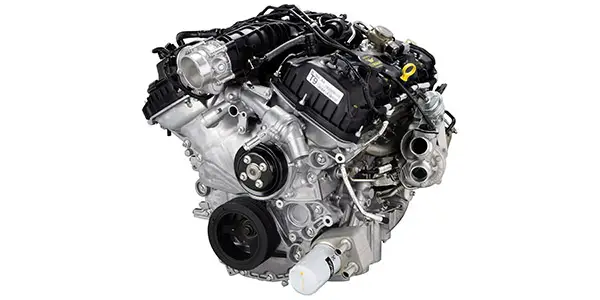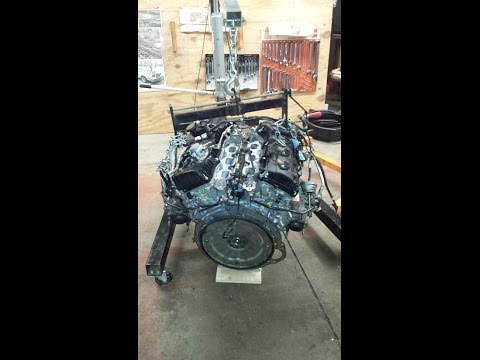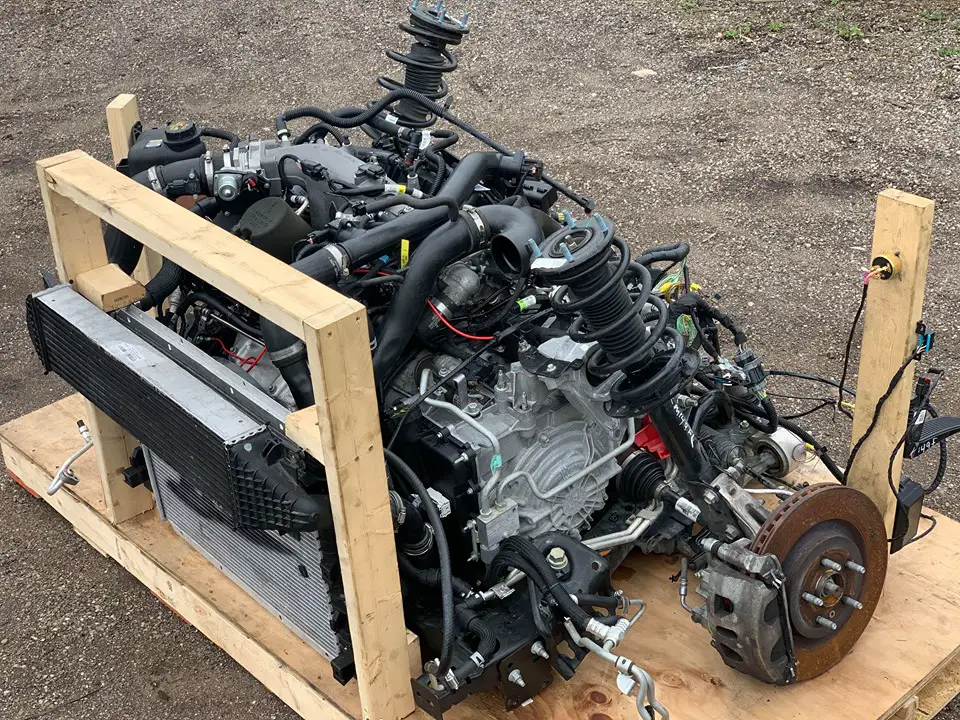The Ford 3.5L V6 EcoBoost engine has been a staple in the automaker’s lineup since its introduction in 2009. Known for its impressive power output, fuel efficiency, and versatility, this twin-turbocharged engine has found its way into various Ford models, including the F-150, Explorer, Expedition, and even the high-performance Ford GT.

However, as with any complex mechanical system, the EcoBoost engine is not without its issues. In this comprehensive blog post, we’ll dive deep into the most common problems faced by Ford’s 3.5L V6 EcoBoost engine.
Intercooler Condensation
One of the most prevalent issues with the 3.5L EcoBoost is intercooler condensation. The intercooler’s job is to cool the air that’s been heated by the turbochargers before it enters the engine. In humid conditions or during light acceleration, moisture can build up in the intercooler. When the driver suddenly accelerates hard, this moisture is sucked into the engine, causing a stumble or hesitation. Ford acknowledged this issue and released a software update to purge the intercooler periodically, but some owners report that the problem persists.
Carbon Build-up Direct injection technology
while excellent for fuel economy and power, comes with a downside: carbon build-up. In port fuel injection engines, gasoline helps clean the intake valves. But in direct injection engines like the EcoBoost, fuel is sprayed directly into the cylinders, bypassing the intake valves. Over time, carbon deposits accumulate on these valves, restricting airflow. This can lead to reduced power, poor fuel economy, and rough idling. The solution? Periodic intake valve cleaning, which can be costly.
Timing Chain Issues
The timing chain is crucial; it ensures that the crankshaft and camshafts rotate in sync. Some EcoBoost owners have reported premature timing chain wear, particularly in 2011-2014 models. Signs include a rattling noise from the front of the engine, especially during cold starts. If the timing chain breaks or jumps, it can cause catastrophic engine damage. Ford issued a technical service bulletin (TSB) addressing this issue, but it wasn’t a full-scale recall.
Oil Leaks

Oil leaks are another common complaint. The main culprits are the oil pan gasket, timing cover gasket, and cam phasers. These leaks often start small but can worsen over time. If left unchecked, they can lead to low oil levels, which can cause severe engine damage. Some owners have also reported oil contamination in their intercooler pipes, further indicating sealing issues.
Turbocharger Failures
The EcoBoost’s twin turbochargers are its defining feature, allowing a smaller engine to produce V8-like power. However, they’re also a source of problems. Common issues include faulty waste gates, which control boost pressure, and oil feed lines that can clog or leak. Some owners have experienced complete turbo failure, often accompanied by a whistling noise or loss of power. Turbo replacements are expensive, often costing thousands of dollars.
Spark Plug and Ignition Coil Problems
The high-output nature of the EcoBoost puts extra stress on ignition components. Many owners report needing to replace spark plugs and ignition coils well before the recommended service interval. Symptoms include misfires, rough running, and reduced fuel economy. Some attribute this to the engine’s high compression ratio and the added heat from turbocharging.
Humidity and Condensation Sensor Issues
In addition to intercooler condensation, some EcoBoost engines suffer from faulty humidity and condensation sensors. These sensors help the engine management system adjust for ambient conditions. When they fail, it can lead to poor running, especially in damp weather. Ford has updated these sensors in later models, but earlier vehicles may need replacements.
Water Pump Failures
Water pump issues aren’t unique to the EcoBoost, but they’re worth mentioning. The water pump is critical for maintaining proper engine temperature. Some owners have experienced premature water pump failure, leading to coolant leaks or even overheating. What makes this particularly problematic in the EcoBoost is its location inside the engine, requiring significant labor to replace.
Cylinder Head Cracks
This is a more severe but thankfully rarer issue. Some owners, particularly those who modify their engines for more power, have experienced cracked cylinder heads. This is likely due to the high thermal stress from turbocharging. Symptoms include coolant loss, overheating, and in worst cases, complete engine failure. It’s a reminder that while the EcoBoost can handle impressive power, it has its limits.
High-Pressure Fuel Pump
(HPFP) Problems The direct injection system relies on a high-pressure fuel pump to deliver fuel at the extreme pressures needed. Some EcoBoost owners have faced HPFP failures, which can cause hard starting, poor idle, and a significant loss of power. In some cases, metal shavings from a failing HPFP can contaminate the entire fuel system, requiring extensive repairs.
Throttle Body Issues
The throttle body controls the amount of air entering the engine. In some EcoBoost engines, the throttle body can become dirty or fail entirely. This leads to erratic idle speeds, hesitation when accelerating, and in some cases, the engine going into “limp mode” for safety. Regular cleaning can help, but some units need replacement.
Transmission Concerns
While not an engine issue per se, it’s worth noting that many EcoBoost-equipped vehicles have had transmission problems. The high torque output of the engine, especially at low RPMs, puts extra stress on the transmission. Owners report harsh shifts, slipping gears, and premature wear. This isn’t a direct EcoBoost problem, but it’s a side effect of its performance characteristics.
Reliability and Consumer Sentiment
With this litany of issues, one might wonder about the EcoBoost’s reliability. It’s a mixed bag. Many owners report trouble-free experiences, especially those who maintain their engines meticulously. Others have faced multiple problems, leading to significant out-of-pocket expenses once the warranty expires.
Consumer sentiment
reflects this divide. Some praise the EcoBoost for its power, towing capability, and fuel economy. They argue that its issues are no worse than those of any modern, complex engine. Others feel betrayed, particularly those who’ve faced expensive repairs. They argue that the EcoBoost’s problems undermine Ford’s claims of durability, especially for work vehicles like the F-150.
Ford’s Response and Evolution
To Ford’s credit, they haven’t ignored these issues. Over the years, they’ve released numerous TSBs, software updates, and revised parts. The 2017 second-generation and 2021 third-generation EcoBoost engines incorporate many improvements, suggesting Ford has been listening to customer feedback.
Some changes include:
- Revised intercooler designs to better manage condensation
- Updated timing chain components for better durability
- Improved turbocharger waste gates and oil feed lines
- Better sealing materials to combat oil leaks
- Port fuel injection added alongside direct injection in newer models to reduce carbon build-up
The Verdict
The Ford 3.5L V6 EcoBoost engine is a study in contrasts. It showcases the potential of modern engine technology—compact size, high power, good fuel economy. Yet, it also illustrates the complexities and potential pitfalls of such advanced systems.
For prospective buyers or current owners, the key is informed decision-making. The EcoBoost can be a great engine, offering V8 performance with V6 efficiency. But it demands meticulous maintenance and a willingness to address issues promptly. Neglect can lead to costly repairs.
Also Read:
- Ford 5.4 Engine Problems: A Deep Dive into America’s Workhorse
- The Real Cost of Replacing a Tesla Bumper – A Comprehensive Guide
- CVT Transmission: The Good, The Bad, and The Technically Advanced
- New Land Rover Defender Off-Road Build – SuvExtreme
If you’re considering a Ford vehicle with this engine, research the specific model year, as later versions have many improvements. Budget for preventative maintenance like intake valve cleaning and high-quality oil. If buying used, a thorough inspection by a Ford specialist is wise.
For current owners, stay vigilant. Listen for unusual noises, watch for leaks, and don’t ignore warning lights. Many EcoBoost problems, caught early, are manageable. Regular maintenance isn’t just recommended; it’s essential.
The 3.5L EcoBoost’s story is still being written. Its problems are significant, yet its potential is undeniable. As Ford continues to refine the design, perhaps future chapters will show an engine that fully delivers on its promising concept. Until then, it remains a powerful but demanding powerplant, reflective of the complexities in modern automotive engineering.



[…] Ford 3.5L V6 EcoBoost Engine Problems: A Comprehensive Analysis […]